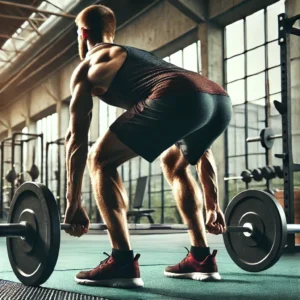 As a former professional pitcher and current coach, I cannot emphasize enough the importance of barbell row exercises and their variations for the upper body health of baseball players. Barbell rows are fundamental for developing the back muscles, which are crucial for maintaining proper posture, enhancing throwing power, and preventing injuries. These exercises specifically target the lats, rhomboids, and traps, ensuring a balanced and strong upper body that can withstand the demands of high-performance baseball.
As a former professional pitcher and current coach, I cannot emphasize enough the importance of barbell row exercises and their variations for the upper body health of baseball players. Barbell rows are fundamental for developing the back muscles, which are crucial for maintaining proper posture, enhancing throwing power, and preventing injuries. These exercises specifically target the lats, rhomboids, and traps, ensuring a balanced and strong upper body that can withstand the demands of high-performance baseball.
Integrating variations of the barbell row, such as bent-over rows, fat-grip rows, and inverted rows, allows players to engage different muscle groups and avoid plateaus in their training. This comprehensive approach not only builds muscle strength and endurance but also improves shoulder stability and scapular control, which are vital for the repetitive and explosive movements in baseball. Consistently incorporating these exercises into a training regimen will lead to improved performance on the field and a reduced risk of shoulder and back injuries, ultimately contributing to a longer and more successful career. Hopefully, by the time you finish reading this article, you will have a new found appreciation for rows and their importance for developing and maintaining a strong upper body that can withstand the rigorous routines baseball athletes put themselves through.
Building a Strong Foundation: The Muscles of the Row
Rows primarily target the muscles of the upper back, including the latissimus dorsi (lats), rhomboids, and trapezius (traps). These muscles are essential for baseball players as they provide the power and stability necessary for throwing. Below is a description of the function of each of the muscles that most upper-body pulling exercises will help develop. While the main focus of this article is the row and its variations, it is still good to have a general overview of the anatomy of the back muscles.
- Latissimus dorsi: These large, fan-shaped muscles play a crucial role in shoulder stability and rotation. Strong lats help prevent shoulder injuries and contribute to powerful throwing mechanics.
- Trapezius: This muscle group supports the neck, shoulders, and upper back. Strong traps contribute to overall upper body strength and help maintain proper posture.By strengthening these key muscle groups, baseball players can reduce their risk of injuries such as shoulder impingement, rotator cuff tears, and elbow problems. Additionally, improved upper back strength can enhance throwing velocity and accuracy.
By strengthening these key muscle groups, baseball players can reduce their risk of injuries such as shoulder impingement, rotator cuff tears, and elbow problems. Additionally, improved upper back strength can enhance throwing velocity and accuracy.
How to Perform the Inverted Row (aka. the all-rounder)
The inverted row is a versatile exercise, and may just be the king of upper body pulling exercises based on that alone. Because it doesn't require specialized equipment it is perfect for baseball players looking to maintain their strength routine at home. Since it is a bodyweight exercise, it can be scaled to any fitness level, and it is easily scalable to your ability level.
To perform an inverted row, you'll need a sturdy object to support your body, such as a barbell, pull-up bar, or even a sturdy table. Here's how to do it:
- Find a suitable bar: Ensure the bar is at a height that allows you to maintain a straight body when hanging from it.
- Grip the bar: Position your hands slightly wider than shoulder-width apart with an underhand grip.
- Hang from the bar: Extend your arms fully and let your body hang straight, forming a plank position.
- Pull yourself up: Engage your core and back muscles to pull your chest towards the bar. Keep your body in a straight line, avoiding sagging at the hips.
- Lower yourself: Slowly lower your body back to the starting position, maintaining control throughout the movement.
Tips:
- Start with your feet elevated on a box or chair to make the exercise easier. As you get stronger, lower your feet to increase the challenge.
- Focus on squeezing your shoulder blades together at the top of the movement to maximize muscle activation.
- Maintain a tight core throughout the exercise to prevent arching your back.
By incorporating inverted rows into your routine, you'll build strength in your back, arms, and core, all of which are essential for baseball performance and career longevity. In the next section, we will look at a close variant of the inverted row, the classic back builder: the barbell row.
The Barbell Row: Building Strength and Power
The barbell row is a fundamental exercise that offers numerous benefits for baseball players. While it primarily builds muscle strength, its impact extends far beyond that.
Core and Hip Strength
One of the standout advantages of the barbell row is its ability to enhance core and hip strength. The exercise demands significant engagement of your trunk muscles to maintain a stable position while lifting the weight. This core activation translates to improved balance, power generation, and injury prevention. Additionally, the hip hinge movement required for the barbell row helps develop the strength and flexibility necessary for explosive movements on the baseball field.
Mastering the Barbell Row
To perform a barbell row effectively, follow these steps:
- Set up: Stand with your feet shoulder-width apart and hinge forward at the hips, keeping your back flat. Grab the barbell with a mixed grip (one hand overhand, one underhand) slightly wider than shoulder-width.
- Lower the barbell: Allow the barbell to hang straight down, almost touching the floor.
- Row: Engage your back muscles to pull the barbell towards your chest, keeping your elbows close to your body. Pause at the top of the movement, squeezing your shoulder blades together.
- Lower the barbell: Slowly lower the barbell back to the starting position, maintaining control throughout the movement.
Tips:
- Maintain a neutral spine throughout the exercise. Avoid rounding your back.
- Focus on retracting your shoulder blades as you pull the weight up.
- Use a weight that challenges you but allows you to maintain proper form.
By incorporating barbell rows into your training routine, you'll develop a stronger, more powerful, and injury-resistant physique.
Incorporating Upper Body Strength Training into Your Baseball Routine
When to Train
To maximize the benefits of upper body strength training, it's crucial to integrate it effectively into your overall baseball regimen. Here's a general guideline:
- Off-season: This period offers ample time for focused strength training. Aim for 2-3 sessions per week, incorporating a variety of exercises to build a strong foundation.
- Pre-season: Maintain strength gains while transitioning to on-field activities. Reduce training frequency to 1-2 sessions per week, focusing on power-based exercises.
- In-season: Prioritize skill development and recovery. Incorporate lighter upper body work, such as bodyweight exercises or resistance band training, 1-2 times per week to maintain strength.
How to Train
To ensure optimal results, consider the following training principles:
- Balance: Combine pushing and pulling exercises to develop a well-rounded physique.
- Variety: Incorporate different exercises to prevent plateaus and target different muscle groups.
- Progression: Gradually increase weight, repetitions, or sets to challenge your muscles and continue making progress.
- Recovery: Allow sufficient rest between workouts to allow muscles to repair and grow.
- Specificity: Focus on exercises that mimic the movements used in baseball, such as rotational exercises and core strength work.
Get Help Developing Your Upper Body Pulling Exercises with Top Velocity!
Programming your upper body pulling exercises doesn't have to be a challenge. When you purchase the 3X Extreme Program or any of the Velocity camps, you get your exact program already laid out and specifically catered to your body's needs. And as you progress, the program will adapt to ensure you keep the gains coming! If you are interested in letting me do the (no pun intended) leg work for you then follow the link below or give me a call at 415-877-4850.






